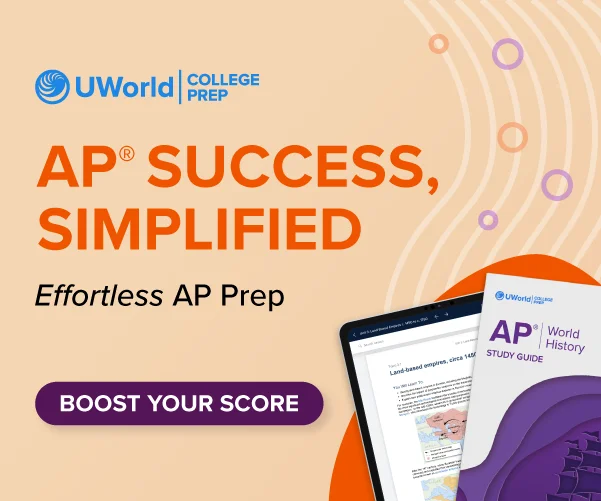The AP World History SAQ section is considered the most straightforward on the test, but it’s not the easiest. SAQs do not simply ask you to regurgitate names and dates. They test your historical reasoning skills and require you to cite evidence to support a historical claim.
To get a high score, you'll need to understand what kind of SAQs to expect on the APWH exam. You'll also need to learn how to answer the questions within the allotted time to earn credit.
Here’s everything you need to know to ace the AP World History SAQ section:
Format of the AP World History SAQ Section
The second part of the multiple-choice section consists of the SAQs, accounting for 20% of your total score. It includes 3 questions to be completed in 40 minutes, so it is recommended that you spend no more than 15 minutes on each question.
Each AP World History SAQ is divided into 3 parts, asking you to compare, describe, evaluate, explain, identify, or support an argument. Here is what each question covers:
- Question 1 (required) includes a secondary source stimulus and asks you to explain a historical development or process in the period between 1200 and 2001.
- Question 2 (required) includes a primary source and asks you to explain a historical development or process in the period between 1200 and 2001.
For the final question, you can choose between Questions 3 and 4. Neither is stimulus-based.
- Question 3 asks you to explain a historical development or process in the period between 1200 and 1750. Question 4 asks you to explain a historical development or process in the period between 1200 and 2001.
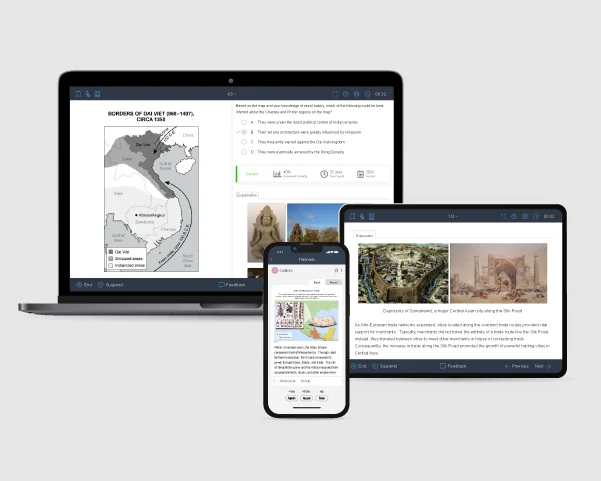
How to Write AP World History’s Short-Answer Questions
The AP World History short-answer questions are not essays, so answers require you to be brief while giving enough detail to satisfy all parts of the prompt. Bulleted lists are not acceptable.
For an "identify" or "describe" prompt, give a simple answer and support it with evidence. Then "explain" or "expand" by connecting your evidence to the original prompt to support your claim.
Answer the question using the A.C.E. method: answer, cite evidence, and explain. First, answer the question directly in a complete sentence without restating the prompt. Next, cite evidence that clearly supports your answer. Finally, explain or provide additional context that ensures you completely answered the question.
AP World History Short-Answer Questions examples
The first step to a solid performance on the SAQ section of the exam is knowing what to expect. Here are some AP World History short-answer questions examples:
Non-stimulus question
Answer all parts of the question that follows.
- Identify ONE way in which the Portuguese, as a maritime empire, produced political changes in the global balance of power in the sixteenth century.
- Explain ONE way in which the Portuguese, as a maritime empire, produced economic changes in the Indian Ocean in the sixteenth century.
- Explain ONE significant way in which the Portuguese maritime empire's relations in Asia changed by the seventeenth century, compared with its earlier relationships in the region.
Secondary Source Question
“In your responses, be sure to address all parts of the questions you answer. Use complete sentences; an outline or bulleted list alone is not acceptable. You may plan your answers in this exam booklet, but no credit will be given for notes written in this booklet. “Under the Mughals, Hindus and Muslims interacted in economics, politics, social life, the arts, and culture. Through migration and conversion, the Muslim population of India grew from about 400,000 in 1200, . . . to 12.8 million in 1535, to perhaps 50 million by 1800. Muslim scholars and Sufi religious mystics and saints migrated to India from Iran, Turkey, and Central Asia. Some came in search of government jobs, others for new cultural opportunities, to study, or to spread their own beliefs. Some of the best poets immigrated from Persia. Similarly, imperial court painters, who produced masterpieces in the Persian and Mughal miniature styles, interacted with painters of the Rajput schools in local Hindu courts across north India, resulting in artistic innovations in both. On the level of mystical belief and experience, an astonishing syncretism emerged between Hindus and Muslims, especially in the poetry of Kabir [died circa 1520] and of Guru Nanak (1469–1538), the originator of the Sikh religion. Mystics in the two communities, Hindu bhakti (devotional) worshippers and Muslim Sufis, frequently had warm personal relations and often attracted followers from each others’ communities.”
Howard Spodek and Michele Langford Louro, United States historians,
article published in a scholarly journal, 2007
Using the excerpt, respond to parts a, b, and c.
- Identify ONE claim that the authors make in the first paragraph.
- Identify ONE piece of evidence that the authors use to support their claims about cultural interactions between Hindus and Muslims as described in the second paragraph.
- Explain ONE reason why Mughal rulers in the period circa 1450–1750 would have encouraged the interactions described in the passage.
Primary source (map)
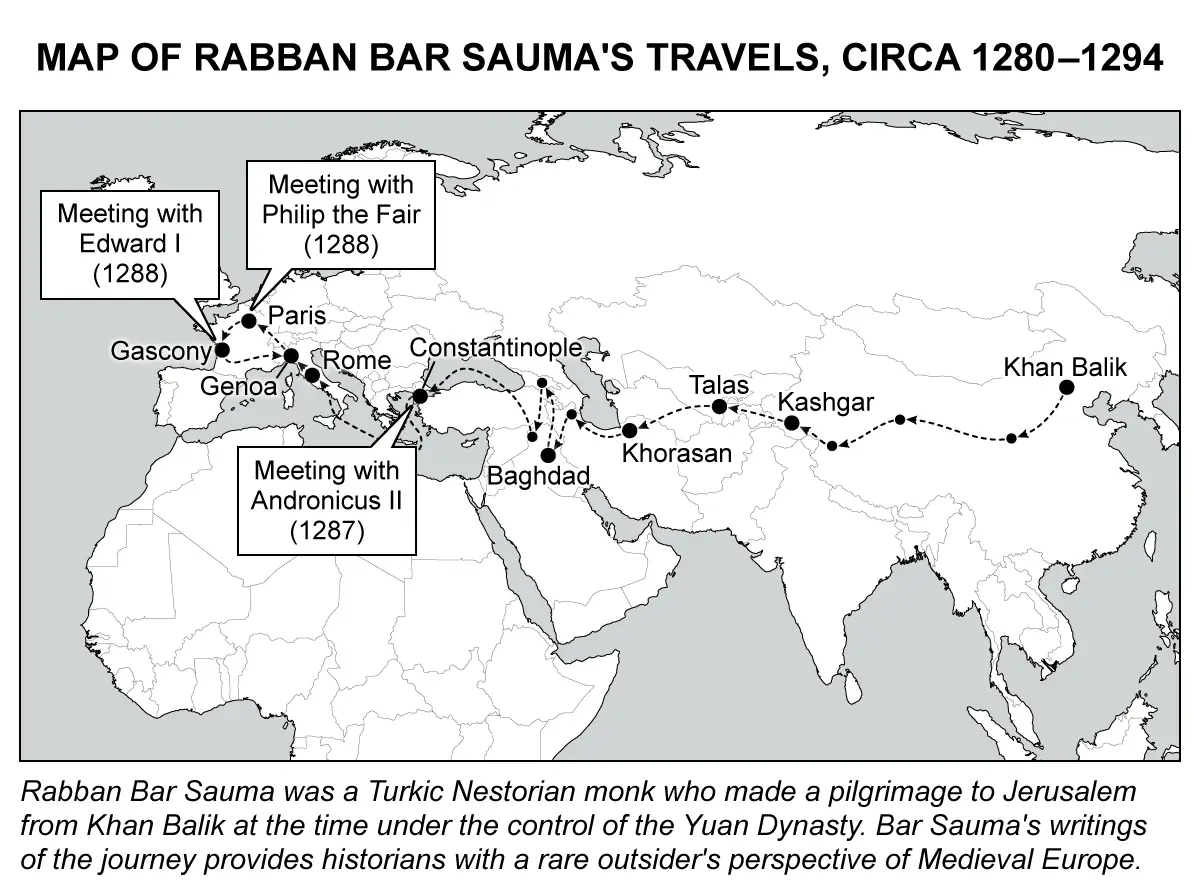
In your responses, be sure to address all parts of the questions you answer. Use complete sentences; an outline or bulleted list alone is not acceptable.
- Identify ONE difference between Rabban bar Sauma's journey and that of either Marco Polo or Ibn Battuta who crossed Afro-Eurasia in the period 1200–1450.
- Identify ONE similarity between Rabban bar Sauma's journey and those of most other travel writers crossing Afro-Eurasia in the period 1200–1450.
- Explain ONE way in which travel writers influenced developments in Afro-Eurasia in the period 1200–1450.
Primary source (passage)
Use the excerpt below to answer all parts of the question that follows.
"After the Balkan War, the political balance of the Balkans being broken in a way unfavorable to Turkey, we advocated an alliance with one of the European groups to offset this disadvantage. The amiable attitude of Germany encouraged us... The German Government, however, did not appear enthusiastic about it, and in its answer expressed the belief that Turkey was too weak to make an alliance with Germany, that an alliance might be useful only if contracted at a propitious time, and that for the moment the time was not ripe for such a union... In the Summer of 1914, however, Germany, to our surprise, revived our old suggestion and proposed to consider it anew. As no change had occurred in our foreign policy in the interval, there was no reason for refusing this proposal, which we had initiated some time before. Consequently in some consecutive meetings with the German Ambassador we prepared a project of alliance. Both parties easily fell into accord regarding the guiding principles and signed an agreement which would form the main lines of a political and military alliance between Germany and Turkey
Mehmed Talat Paşa, Grand Vizier of the Ottoman Empire,
Posthumous Memoirs of Mehmed Talat Paşa, 1918
In your responses, be sure to address all parts of the questions you answer. Use complete sentences; an outline or bulleted list alone is not acceptable.
- Identify ONE way in which the relationship described in the excerpt reflects political changes in the European balance of power in the late nineteenth century.
- Identify ONE way in which the relationship described in the excerpt reflects economic changes in Europe by the early twentieth century.
- Explain ONE significant way in which Turkey's relationship with Europe changed in the twentieth century, compared with the relationship depicted in the excerpt.
Primary Source (Art)
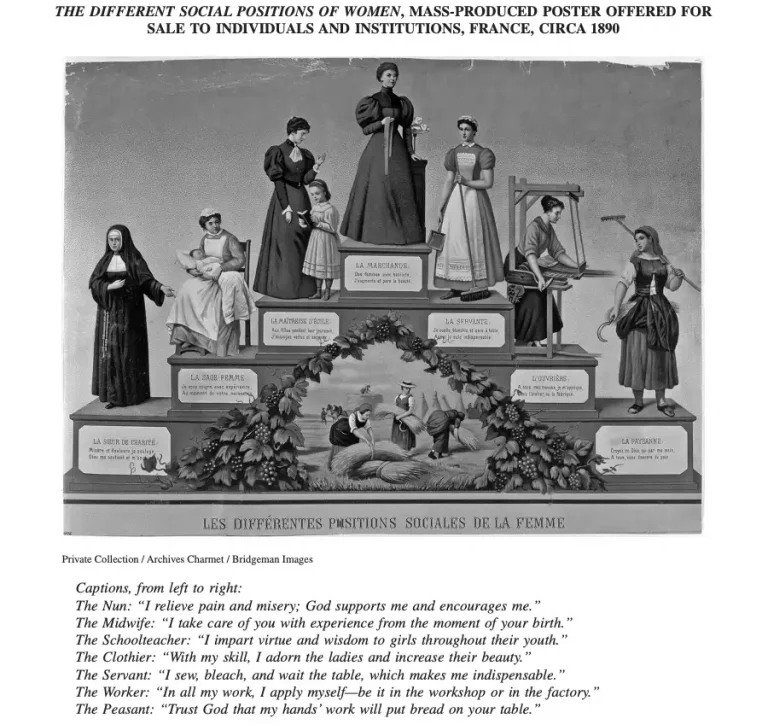
- Identify ONE way in which the views reflected in the image represent a continuity with traditional notions of gender roles.
- Identify ONE way in which the views reflected in the image represent a change from traditional notions of gender roles.
- Explain ONE way in which the format or intended audience of the source may have influenced the way in which gender roles are portrayed in the image.
Source: College Board
How To Practice AP World History Short-Answer Questions
Practicing short-answer questions that are like those on the exam and in a timed environment will help propel you to a 5. Focus more frequently on secondary source questions since they will always appear in the SAQ section.
Since the course no longer covers content before 1200, many SAQs from past exams are irrelevant. Original short-answer questions aligned to the College Board’s® most current course and exam description are included in UWorld's AP World History prep course, which comes with a comprehensive study guide and an extensive QBank
Frequently Asked Questions (FAQs)
How are AP World History short-answer questions graded?
Each SAQ will receive 0 to 3 points, with each part of the SAQ being worth 1 point. Here are the criteria for earning points on SAQs:
- Clarity. You must clearly communicate your answer to receive a point.
- Accuracy. Your answer must be historically defensible.
- Description. You must describe the historical process or development.
- Explanation. You must provide historical insights.
How much do you need to score in the SAQ section of the APWH exam?
The SAQ section of the AP World History exam accounts for 20% of your total score. Each question is worth 3 points, making a total of 9 points for this section. Since the College Board doesn’t disclose a scoring range for this section, you should closely follow the scoring criteria to maximize your score and earn as many points as possible.
How long is the short-answer section of the AP World History exam?
The short-answer section on the AP World History exam contains 3 questions, each with 3 parts. You’ll have 40 minutes total to complete the section or 5 minutes per part.
Where can I get past AP World History exam short-answer questions?
The College Board AP Central website has SAQs from 2002 to 2024, along with scoring commentary, available for download. However, many of the SAQs from prior to 2017 are not applicable because the course no longer covers content before 1200.
References
(2025). Section I, Part B: Short Answer. Exam Format. AP World History: Modern. Retrieved on January 7, 2025 from https://apcentral.collegeboard.org/courses/ap-world-history/exam
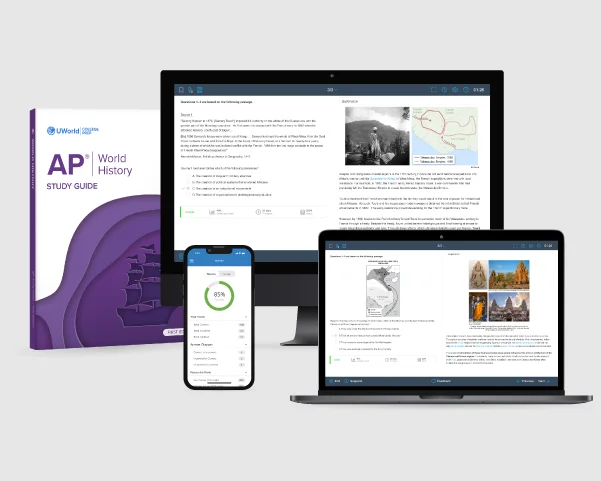
Read More Related Articles
The FRQ section is worth 40% of the AP World History: Modern score. Here are the strategies and resources that will help you ace the APWH free-response questions section.
How to Study for AP World History MCQsLooking for help with multiple-choice questions? Find strategies and resources that will help you get your desired score on the AP World History multiple-choice questions.
AP World History: Modern Study PlanDon't waste time looking for a perfect APWH guide! Here's the all-in-one AP World History: Modern study plan with proven strategies and study materials to help you score a 5.
Best AP World History Prep Course ReviewDiscover the best APWH prep courses with our in-depth review. Find top-rated APWH resources, study strategies, and expert recommendations to help you excel on the exam.
AP World History Study Guide ComparisonExplore a detailed comparison of top AP World History study guides, including their features, strengths, price points and how they can help you prepare effectively for the exam.
How to Self-Study for AP World HistoryLearn how to self-study for AP World History. Here are some effective tips, proven strategies, and top quality resources to help you master the course and excel on the exam.

